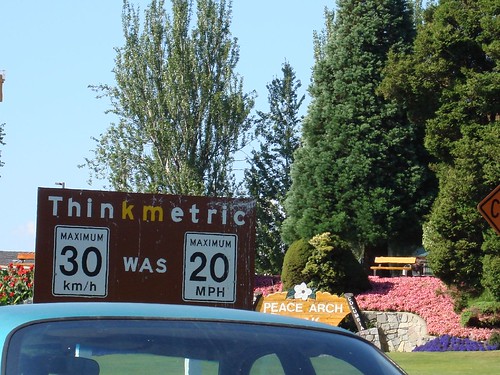I just came across an old article on Mother Nature Network that combines my favorite sequence (yes, I have a favorite) with a common conversion issue. As an American I think in miles but as someone who reads about, works with, and travels on roads in, well, any other country, I often/sometimes/usually come across speeds and distances measured in kilometers. Like Fahrenheit and Celsius, I know a few basic conversions, and can usually just guesstimate between those. But here is a fun trick for figuring out the rest of those dang speed conversions.
It starts with the Fibonacci sequence:
0, 1, 1, 2, 3, 5, 8, 13, 21, 34, 55, 89 …
where each number is made up by adding the two previous numbers (0+1=1, 1+1=2, 2+1=3, 3+2=5, 5+3=8, etc)
This sequence is very close to, but not exactly, the golden ratio — which is the growth factor for the famous golden spiral — as commonly seen in nature and design.
This sequence happens to also be very close to the relationship between kilometers and miles. It roughly works out that if one of those Fibonacci numbers is in kilometers, the preceding number is that distance (or speed if divided by time) in miles. So a speed of 89 km/h is, generally speaking, 55 mph. Similarly 55 km/h is about 34 mph.
A number not in the sequence can be broken down into sequence numbers and each of their conversions added up. The example in the article showed that to find 100 km, you can use 89, 8, and 3 since together those equal 100. Their mile equivalents are 55, 5, and 2, which add up to 62.
As Google says the actual conversion is 100 km = 62.1371192 miles, I’d say this is pretty damn close.



1 Comment
i wonder if my car has a calculator dock built in